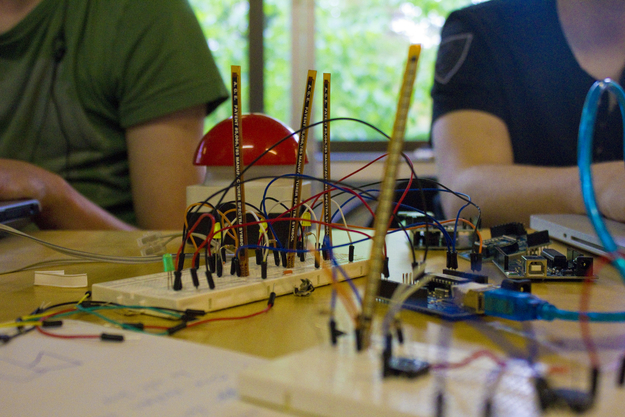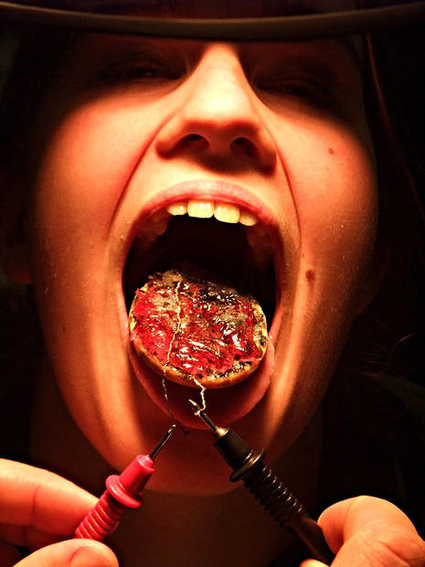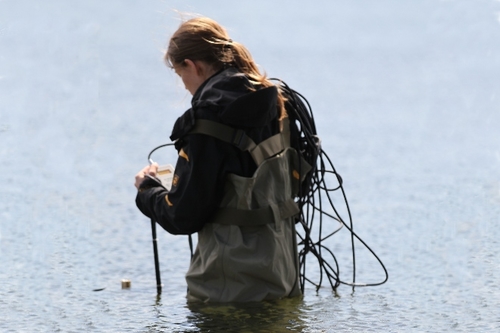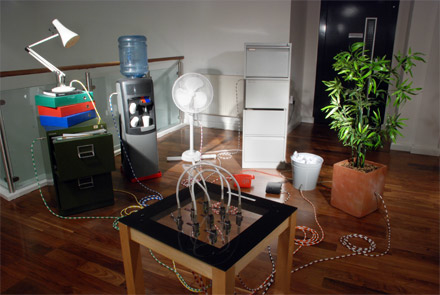Edible solarcells
Who?
Artist Bartaku
What?
Edible solarcells consist of experimentations on the transformation of light energy into electric energy with food.
Why?
Data and sensor project related with food.
More information about the project on Growing Mediamatic
The art of gathering environmental data
Who?
Under the umbrella of ‘The Art of Gathering Environmental Data’, based on Finnish Bioart Society and Pixelversity
What?
Organise a series of events and workshops concerned with collecting, publishing and using environmental data in art&science practice.
Why?
Mediamatic wants to work with artists, activists and people that have been starting to produce, publish and use realtime environmental sensor data.
Aristotle's office
Who?
Tom Keene and Kypros Kyprianou are two artists of the Electric sunset organization
What?
Using office furniture, this performance explores Aristotlean concepts of the ‘essence of things’ in the coming age of the ‘internet of things’. Each object has the ability to detect changes in the physical status of the objects they are plugged into, and, using simple rules, react accordingly.
Why?
Mediamatic is developping itself as a social network. It would be an idea to see how the objects also connect and develop relationships between them.
Brave New Farm
Robotics and sensing technologies can be used for small-scale farming and food production - 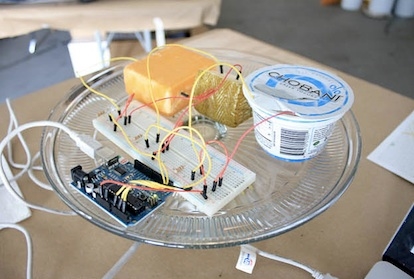
Who?
At the Georgia Institute of Technology, a group of design researchers have been looking into how robotics and sensing technologies can be used for small-scale farming and food production. The remote sensing system, designed by Thomas Lodato, is called Sheep’s Clothing – so named because the sensors are camouflaged to blend in with their outdoor surroundings.
What?
The goal of the project is not to make foragers lazy or to eliminate the human role in wild food cultivation. But the interested is focalized on how technology can support foragers and farmers who make a living from agriculture but for whom industrial-scale technology is not appropriate.
Read more about it here
Why?
Here, the interesting thing is the mixed of sensor project and food.
